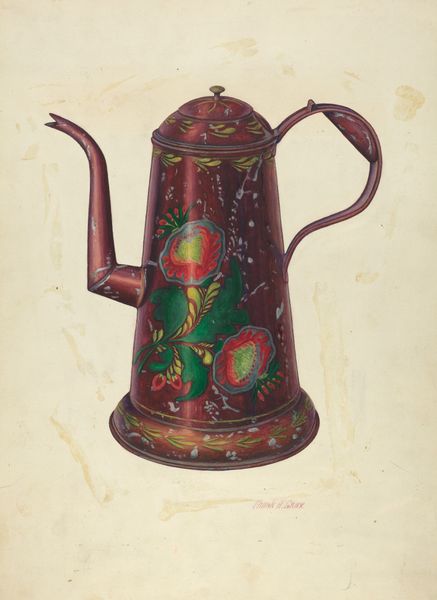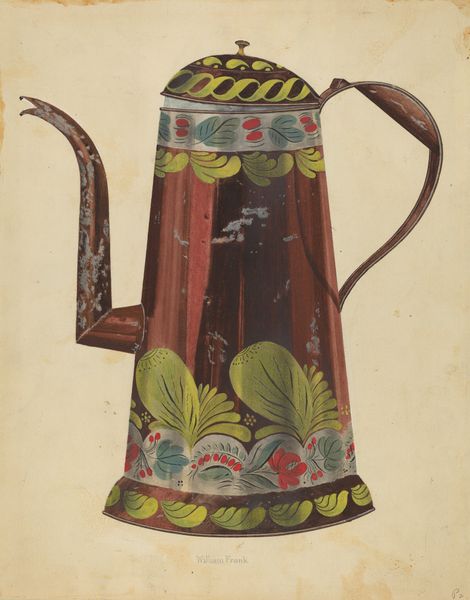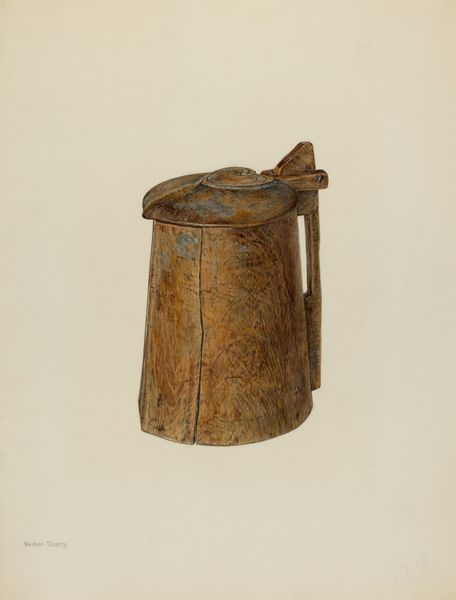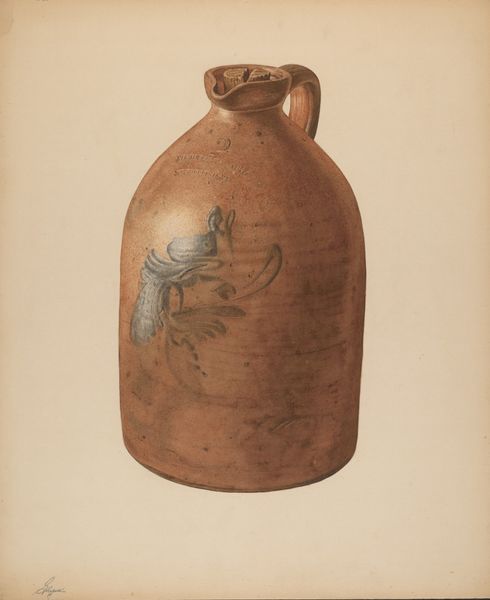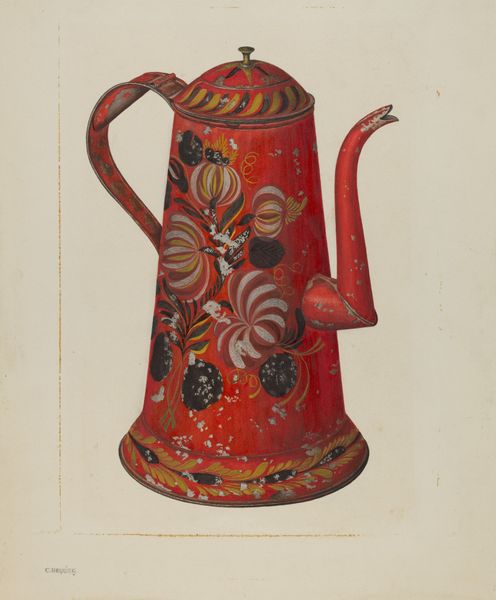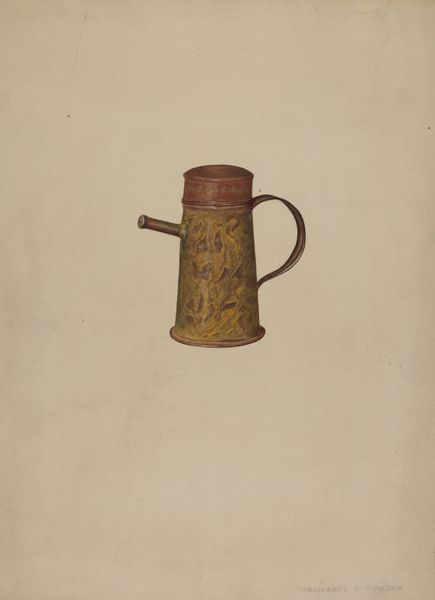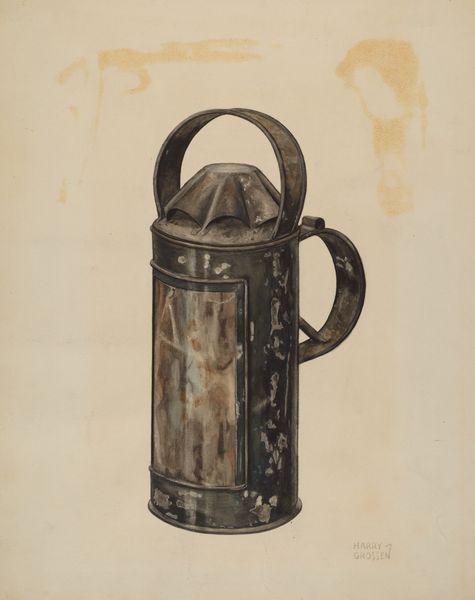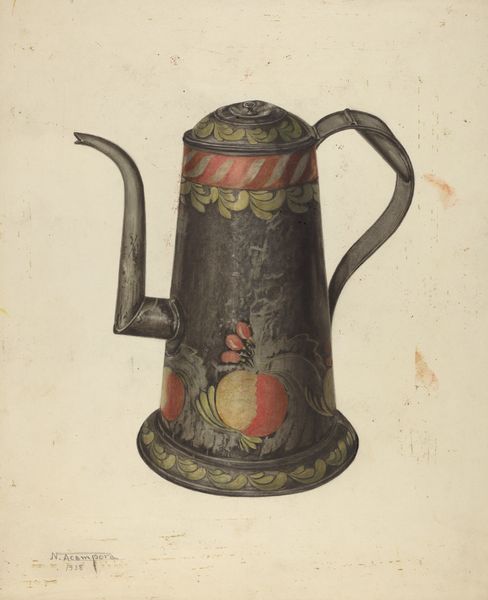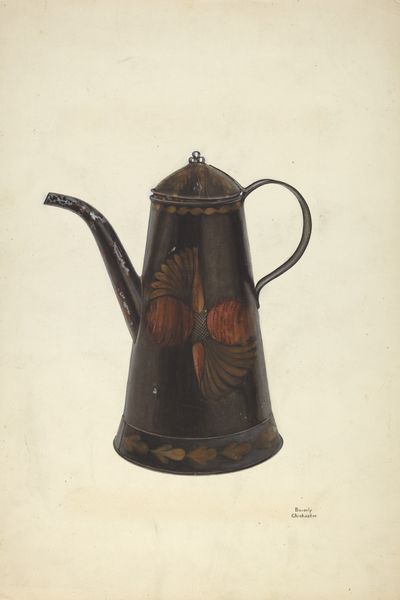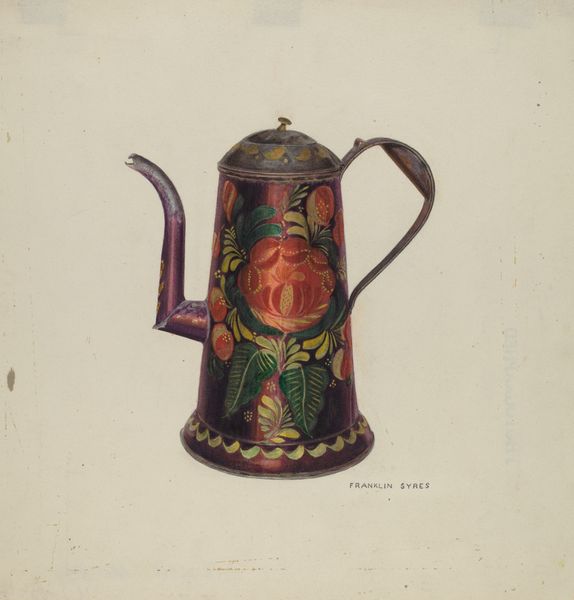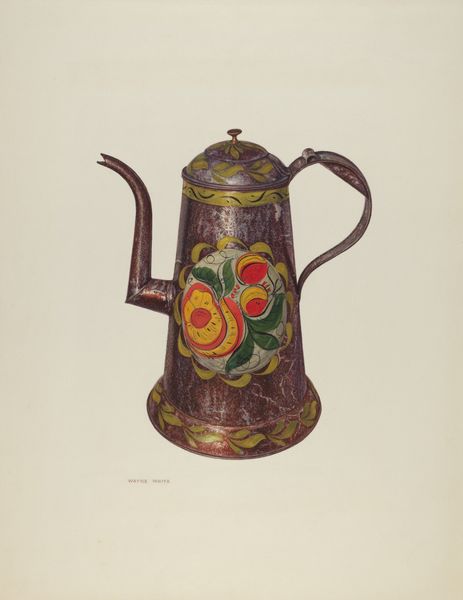
drawing, watercolor
#
drawing
#
oil painting
#
watercolor
#
watercolour illustration
#
watercolor
#
realism
Dimensions: overall: 45.4 x 33.3 cm (17 7/8 x 13 1/8 in.)
Copyright: National Gallery of Art: CC0 1.0
Curator: Here we have “Toleware Teapot,” a watercolor by Henry Murphy, created between 1935 and 1942. Editor: It has this quiet, almost melancholic mood. The teapot looks aged, maybe even forgotten. And the color palette – mostly muted with little bursts of bright color where you see a painted flower, looks intentionally subdued. Curator: Consider the period in which this was made, the tail end of the Great Depression moving into World War II. Objects like this weren’t just domestic tools; they carried histories, labour, and resilience during scarcity. What stories might this vessel contain, when considering social instability, race, or migration at the time? Editor: I agree. Look closely at the texture – it almost feels tactile. It’s an attempt to elevate a common item. We need to reflect on the labor that produced both the object and the artwork itself, while focusing on the materials utilized. It begs the question of class and status. Curator: Precisely. Was this artwork produced for sentimental or archival intentions, reflecting the time in the subject and not on its historical era or intended class status? Perhaps to serve a kind of time capsule through representation? The painting challenges our understanding of beauty and gender through an object often relegated to domestic labor and expected female spaces. Editor: It also suggests to me a fascination with handcrafted things amidst rising industrial production. There’s care visible in every detail. From a utilitarian item into something to look at. But that begs an important question: Did this art alter people's attitudes on consuming industrially versus personally created? Or change how these handmade products were traded? Curator: It is that dialectic, the dialogue between production and gender roles, that keeps artworks like this relevant. Looking at it in relation to political turmoil lets us reassess not only history but ourselves, to reassess contemporary narratives too. Editor: Right. By zooming in on process, materials, and purpose, this challenges us to reflect on the relationship between objects and consumption, past and present. Curator: Indeed, it challenges, maybe even haunts us to seek beyond surface-level meanings when reflecting on objects within a consumer society. Editor: This image allows us to view the material conditions from its inception and its relationship to the economy while opening up these difficult but necessary conversations.
Comments
No comments
Be the first to comment and join the conversation on the ultimate creative platform.
